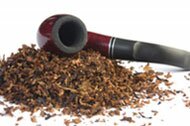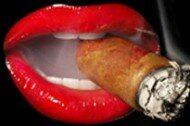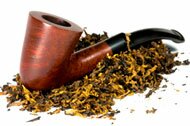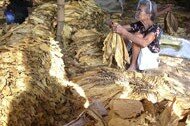Health officials are manning the school ramparts for a fresh tobacco assault they feel sure is about to happen, if it hasn’t started already. Colorado is a test market for RJ Reynolds new line of dissolvable tobacco products. They just can’t prove it.
It was May when the R.J. Reynolds Tobacco company introduced its new “dissolvable” products into Colorado as a test market. Those products include Camel Orbs, pellets roughly the size of breath minds; Camel sticks, twisted sticks the size of a toothpick; and Camel strips, similar to breath strips. All are made from finely ground menthol-flavored tobacco and are designed to melt in the mouth.
Tobacco is tobacco, even if it is smokeless, and it’s illegal for vendors to sell the products to minors. It’s also a violation of the state’s Tobacco-Free Schools Act for students to bring these items onto their campuses. Indeed, as far as state officials know, no Colorado student has yet been caught sneaking a tobacco orb, strip or stick into his or her mouth at school.
But health officials feel it’s just a matter of time, given the allure of the product.
“They only started testing this product in Colorado a few months ago. We haven’t had time to track its usage,” said Bob Doyle, executive director of the Colorado Tobacco Education and Prevention Alliance, a statewide coalition of organizations committed to reducing tobacco use. “But we’re trying to get ahead of this before it happens.”
State Board of Health wants product out of Colorado
Last month, the Colorado Board of Health unanimously approved a resolution calling on RJ Reynolds to stop the test marketing of the candy-like products in the state until the federal Food and Drug Administration decides whether to regulate them or not. The FDA will report to Congress next March the results of its study of the health effects of dissolvable tobacco.
For more information
Hear testimony and see presentations made to the Colorado Board of Health at its August hearing on dissolvable tobacco products 2008 Healthy Kids Colorado Survey on Tobacco and Health
The health board also called on officials from the Colorado Department of Public Health and Environment to alert school officials, parents and young people to the threat posed by the new tobacco products.
Since then, Cherry Creek and Aurora school board members have seen presentations on dissolvable tobacco during the public comment section of their meetings, and information about dissolvables has gone out to health staff and teachers in Steamboat Springs.
In addition, information about dissolvables will be included in the November issue of Thrive, a parent newsletter for Boulder Valley schools.
This is just the beginning, say health officials.
“We can’t say what the timeline might be at this point until we sit down with Department of Education folks,” said Stephanie Walton, Youth Tobacco Specialist in the Prevention Services Division of CDPHE. “Right now, I’m not sure how aware school districts even are about these things.”
Meanwhile, Doyle is urging all schools to provide fact sheets about dissolvable tobacco to staff and parents, and to monitor whether the products have appeared on their campuses. If so, he’d like to know.
“Please pass the information on to me so we can keep track,” he said.
He’s also encouraging parents to sign an online petition calling for the end of the test marketing of these products in Colorado, and he’s asking school boards and other organizations across the state to draft similar resolutions.
Camel sticks, strips and orbs look like candy or breath strip packages. Photo from Tobacco-Free Aurora
Despite the lack of hard evidence that teens are using products that makers say are clearly meant for adults, health officials point to some troubling circumstantial evidence:
There’s brand loyalty, for one thing.
“We have research that shows that youth smokers are very brand loyal,” Walton said. “We know that Camel is one of the most popular brands with teen smokers, so anything marketed under the Camel brand will appeal to young people. We have a study that shows established youth smokers are most likely to smoke the same brand as the first cigarette they tried. So if they’ve tried a Camel, they may be more likely to try these products.”
There’s also the sneakiness factor. These are products that can easily be brought into a classroom, and just as easily be mistaken for mints. And unlike other forms of smokeless tobacco, they won’t have to spit it out afterward.
“I could have 10 of these orbs in my mouth at once, and you wouldn’t know it,” said Doyle. “I could be getting a very large dose of nicotine and you wouldn’t even know it. This really facilitates addiction.”
Flavor and price are two more teen-friendly aspects of the dissolvables. Their mint flavoring makes them more attractive to youngsters. And at a cost of about $2.50 per pack, the price fits more easily into teen-age budgets than a $5 pack of cigarettes.
“Youth are price-sensitive tobacco users, so this is an easier entry point for them,” Walton said.
Finally, there’s product placement. Two other dissolvable tobacco products – Stonewall and Ariva – have been on the market for some time without much furor. That’s because Stonewall is typically sold in tobacco stores, while Ariva is more likely to be sold in drug stores, next to nicotine replacement products.
“But we’re finding Camel Orbs in convenience stores and gas stations, stores where you typically see cigarettes sold,” Walton said.
Despite all this, tobacco-product manufacturers point out that the products really do fill a niche, that they provide adults with tobacco options that don’t involve second-hand smoke or cigarette butts, that they carry the same warnings as other tobacco products, and that it’s the opponents who repeatedly refer to these products as “candy” who are really causing the problem.
And, as Thomas A. Briant, executive director of the National Association of Tobacco Outlets, told members of the board of health at an August hearing, the vast majority of tobacco vendors refuse to sell their products to minors.
“From Aug. 30, 2017 to June 20, 2018, 99 percent of 989 Colorado retailers successfully refused the sale of tobacco products in compliance checks conducted by the Colorado Department of Public Health and Environment,” Briant said. “Only nine out of 989 retailers received a warning letter from the FDA alleging a sale of tobacco products to a minor, and even some of these nine locations were not retail stores.”
Across the state, the rate of smoking among teens has steadily fallen in the last decade. According to the most recent data, the 2008 Healthy Kids Colorado Tobacco and Health Survey, 37 percent of teens reported ever having smoked, down from 54 percent in 2001.
“The trendline is going down, though the decrease has slowed,” Walton said.
The data on smokeless tobacco is less clear. Figures on that form of tobacco use aren’t even available before 2006. According to the 2009 National Survey on Drug Use and Health, roughly 17.7 percent of high school students in Colorado identified themselves as smokers, versus 16.8 percent who used smokeless or spit tobacco. Nearly all of the spit tobacco users were, not surprising, male.
The new dissolvable tobacco products aren’t like to gross out girls the way spit tobacco does, health officials predict.

 RSS Feed
RSS Feed Twitter
Twitter



 Posted in
Posted in  Tags: camel orbs, fresh tobacco
Tags: camel orbs, fresh tobacco









